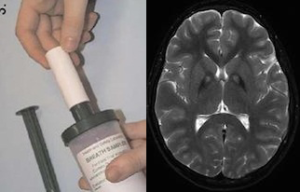Several groups studying Parkinson’s have had a hunch – a gut feeling, even – that intestinal inflammation is involved in driving the disease. Now Emory researchers led by Malu Tansey, PhD have some evidence from patient samples to back it up, published in the journal Movement Disorders.

IMP graduate student Madelyn Houser
German pathologist Heiko Braak has been honored by the Michael J. Fox Foundation for Parkinson’s Research for his theory, originally published in 2003, proposing that disease pathology – marked by aggregation of the toxic protein alpha-synuclein — may begin in the gastrointestinal tract and migrate from there to the central nervous system. This proposal was both provocative and influential in the Parkinson’s disease (PD) field. And Tansey herself has long been interested in the role of microglia, the immune cells resident in the brain, in PD.
The first author of the new paper, Immunology and Molecular Pathogenesis graduate student Madelyn Houser, notes that digestive problems such as constipation are frequently reported in PD patients. But what is the cause and what is effect? As neurologist Stewart Factor observed for a Emory Medicine article on PD’s non-motor symptoms: “A patient might tell me he’s had recurring constipation for 10 years, but he wouldn’t say anything to a neurologist about it until he starts having other symptoms.” Read more







